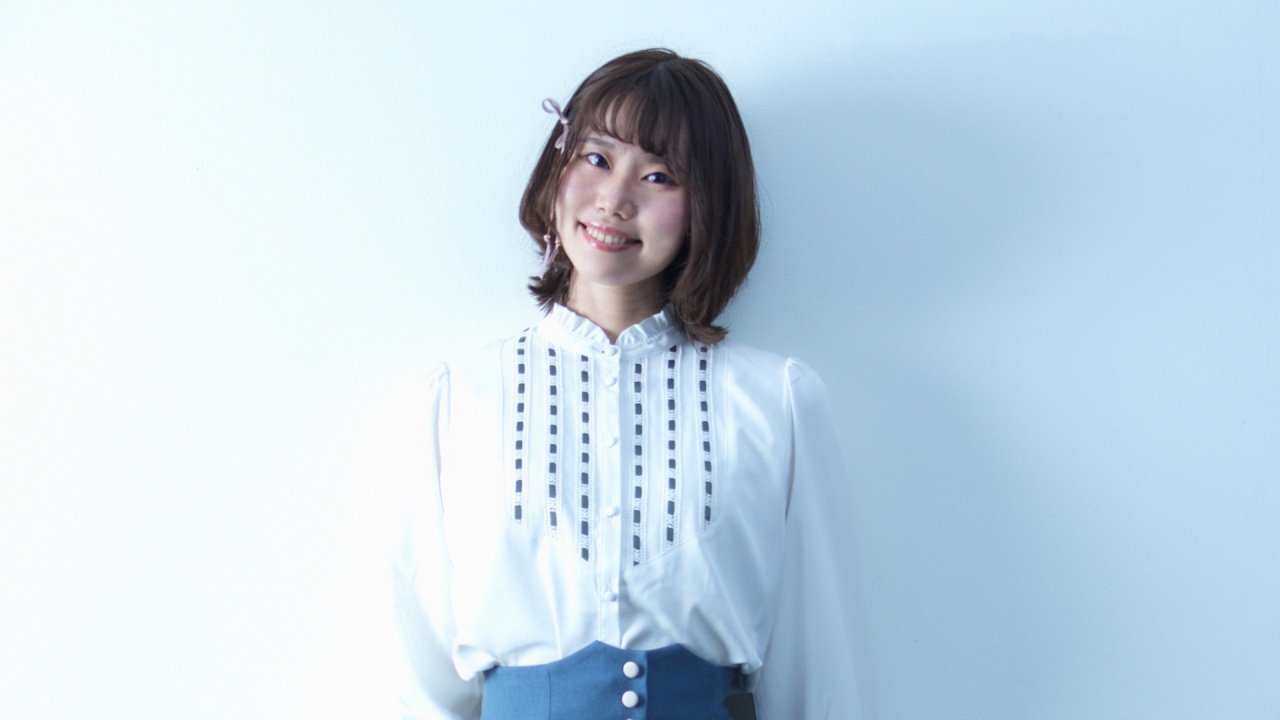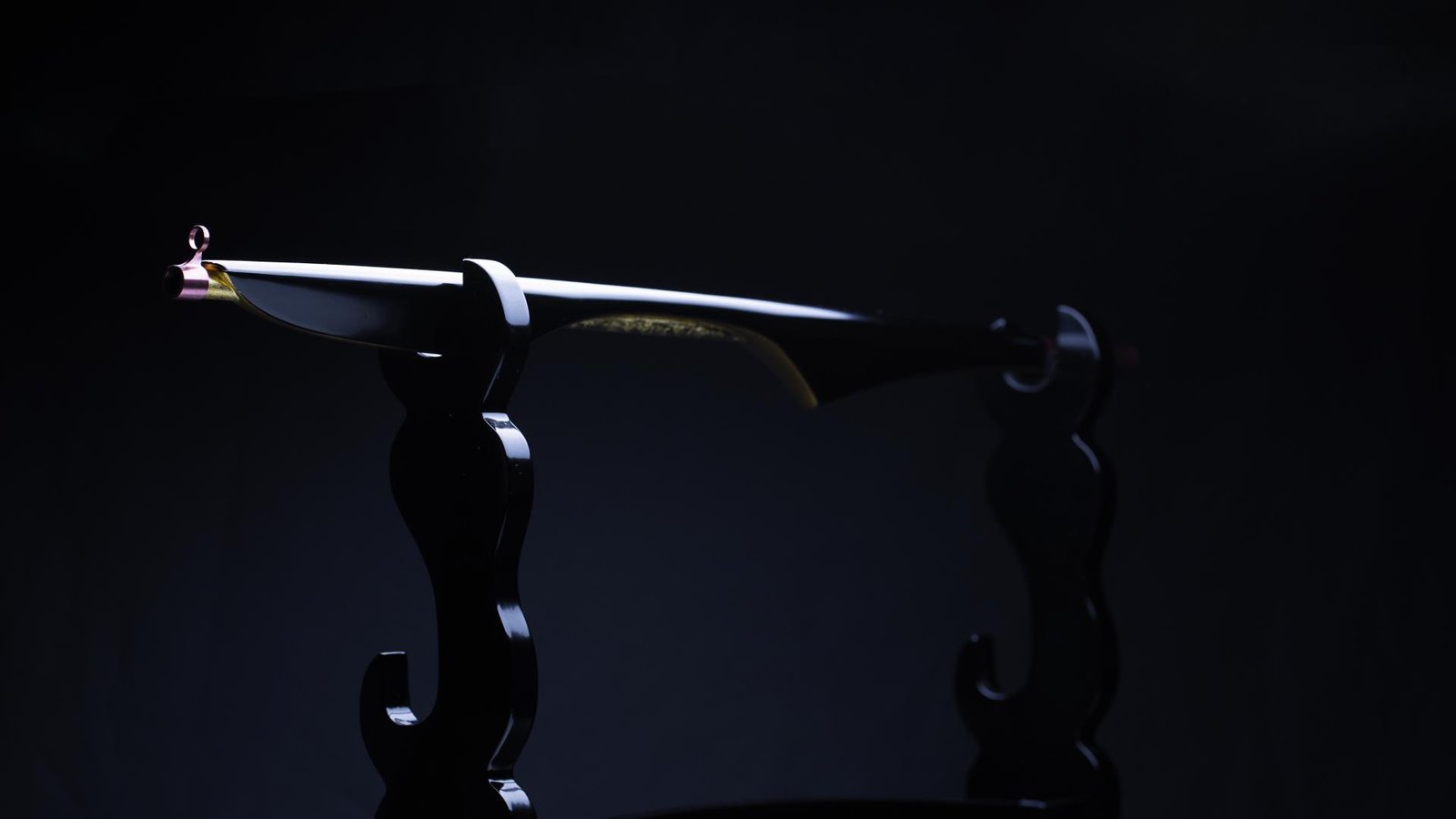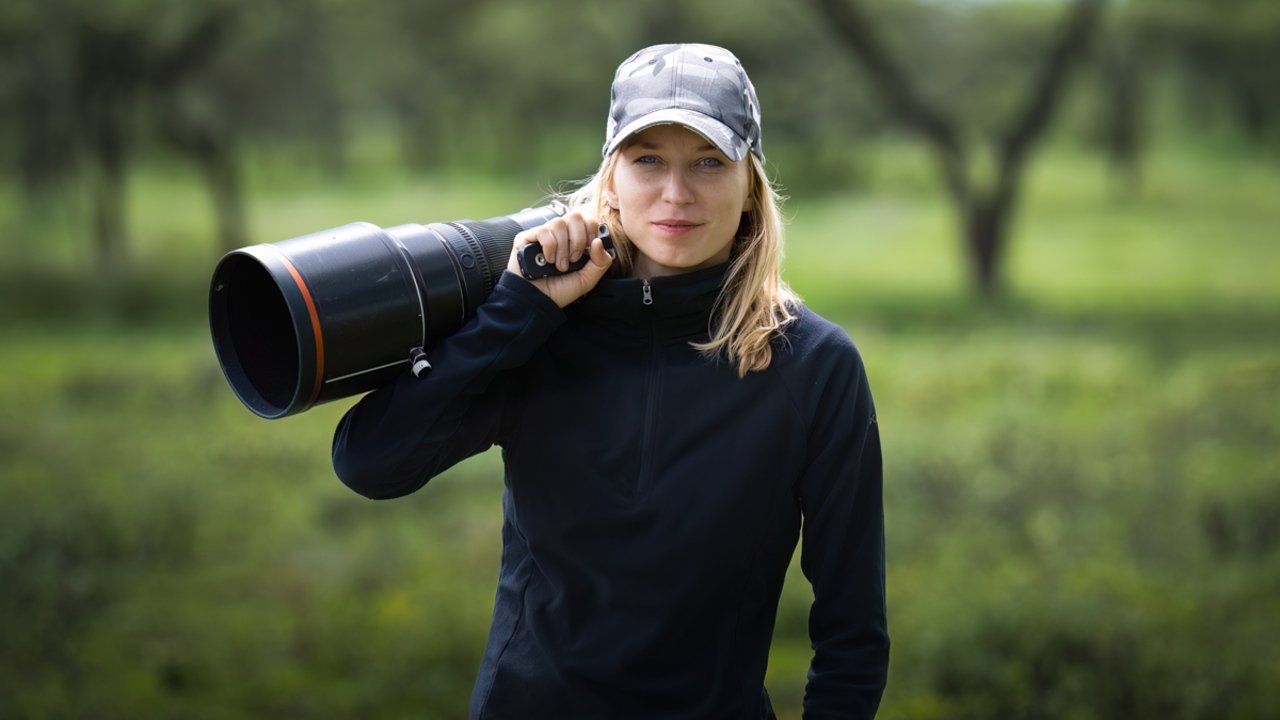
“Design Is Not a Checklist” – Avi Singh Remarks on Design Excellence
July 7, 2025
How Daria bond II Was Built | Pooya Zonooz Shares His Take
July 7, 2025Haru Yosano
Haru Yosano is an award-winning Japanese voice actor and voice director known for bringing cultural nuance, emotional restraint, and atmospheric depth to projects across global markets. With a background in Japanese cultural history and a career shaped by independence and cross-border storytelling, Haru has voiced for brands like LVMH and Amazon, video games such as Mythic Heroes and Fortnite.
Hello, my name is Haru Yosano, and I’m a Japanese voice actor. I’m truly honored to win Gold in the “Best Voice-Over Talent” category at the Vega Digital Awards.
Previously, in 2023, I became the first Japanese talent to win in three categories simultaneously at the Voice Arts® Awards (SOVAS). In 2024, I was nominated in every category I applied for. Additionally, I was selected as the Silver Winner at the NY Digital Awards 2025. I’m incredibly grateful that my work has been recognized on a global stage.
My current work mainly centers around voiceovers for global brands such as LVMH, Amazon, IBM, Salesforce, and SONY. I’ve contributed to a broad range of projects—from brand films and commercials to corporate videos, e-learning content, and podcasts. Among these, catchy, conversational commercials are one of my strongest areas, and I’ve built a solid track record in that space.
As for game voiceovers, I’ve worked with clients from North America, Europe, and Chinese-speaking regions. Some of the roles I’ve performed include Camazotz in Mythic Heroes and Xero in Fortnite: The Pit of Legends. I often get cast for characters with a Japanese background or a mysterious aura. Breathing life into these characters—imagining their stories and emotions—is always a deeply rewarding challenge.
I also work as a voice director, paying careful attention to cultural context and expressive nuance. Together with my clients, I strive to craft performances that truly resonate. Additionally, I serve on the board and as a casting director for “Free Narrators Union”, a collective of over 100 narrators.
My professional voiceover journey began in earnest in 2020. Before that, I earned a master’s degree in Japanese cultural history from a university in Kyoto and worked in inbound tourism. I created and managed content for cultural attractions and interacted daily with international travelers and people in the entertainment industry.
However, in April 2020, due to the global lockdown caused by the covid pandemic, the tourism industry came to a complete halt, and my work, which was centered around it, also disappeared.
I asked myself, “How do I want to live from here on out?”
The answer came in the form of a memory—words my high school English teacher wrote to me on a message board for my 17th birthday:
"Maybe you’ll become a voice actor and travel the world with your voice."
That message had quietly stayed with me all along, like a signpost.
From the start, I aimed to become a voice actor who could work globally. Unusually for the Japanese voice industry, I began my career independently, without agency representation. Discovering Netflix’s global home recording guidelines helped me build a studio environment at home that met international production standards.
Because of that background, my career has never been confined to the label of “voice actor.” Through voiceover, I aim to explore new ways of communication that go beyond borders and industries.
To deliver stories to the world through the power of voice—that’s the mission I live by today.
Earlier this year, I found myself thinking, “I want to take on a new international award—one that might connect me to countries and fields I’ve yet to encounter.” That’s when I discovered the Vega Digital Awards. The past winners had created truly inspiring work.
That’s when I thought, “Maybe here, voice acting performance can be recognized as a form of digital art.” That was the moment I decided to apply. This award still feels fresh and bold, full of challenging, innovative perspectives. I resonated with that worldview.
Receiving this award feels like a recognition that voice—like graphics or visuals can be part of the digital future as an artistic expression. That’s incredibly meaningful, both personally and professionally.
It’s proof that Japanese-language voices, and the cultural stories they carry, can reach the global stage.
This recognition has given me great confidence as I move forward in my career, and I sincerely hope it can also serve as a beacon of hope for other voice actors and creators who are aiming to work internationally.
The concept behind this work was inspired by the fukiya—a traditional Japanese blowgun, often associated with ninjas in folklore and popular culture. We wanted to translate the aesthetics of silence and the spiritual depth rooted in Japanese culture into modern visual expression.
Working alongside traditional artisans, we integrated craftsmanship from woodworking, lacquer, gold leaf, and metalwork into the visual elements. From there, I constructed the vocal performance to harmonize with that atmosphere.
In this piece, I didn’t approach the voice acting as “narration” or “explanation.”
Instead, I positioned the voice as something that gently accompanies the visual’s spaces of stillness. Through breath, pauses, and subtle inflexions, I aimed to evoke the spirit of wabi-sabi, Zen, and traditional Japanese martial arts.
When voice and visuals merge, the voice can weave an invisible emotional layer that transcends what the eye can see. That’s the kind of expression I pursued.
In a time when AI-generated voice and synthetic audio are rapidly advancing, I feel that the role of vocal expression rooted in cultural context is becoming more vital than ever. This project sought to show that a voice doesn’t just supplement visual expression—it can shift the very texture of the atmosphere itself.
In that sense, I believe this award acknowledges the broader potential of voice acting as a profession on the global stage. And for that, I feel deeply honored.
I believe one essential approach was intertwining the voice with the atmosphere that quietly lives behind the visuals.
Rather than functioning as an explanation or emotional guide, the voice here acted as a design element—one that created a sense of space filled with breath, quietude, and restraint. By intentionally avoiding over-explanation and allowing pauses and silence to remain, I created room for the visuals and voice to engage in a kind of dialogue.
Another distinct feature was the fusion of “tradition and digital” by collaborating with Kyoto artisans to create an actual blowgun (fukiya) using techniques from traditional crafts. The texture of real hand craftsmanship captured in live-action, juxtaposed with the serene world of 3DCG, this contrast between reality and virtuality embodied the aesthetic of “tradition meets innovation,” and reflected Japanese sensibilities.
In this project, voice, visuals, craft, and concept all aligned under a single unifying philosophy. Together, they created one shared atmosphere. I believe that’s what allowed the piece to go beyond the conventional framework of “video + voice acting.”
This project was a truly ambitious endeavor, carried out in collaboration with traditional Japanese artisans.
We asked master craftsmen—specialists in gold leaf, metalwork, woodworking, and lacquer—to recreate a fictional ninja blow gun, originally designed in 3D, using their real-world traditional techniques.
To be honest, it was a bit outrageous request. The structure of the project itself, in which artisans from completely different disciplines came together to bring a single imaginary object to life using a division of labor, felt like a kind of “modern ninja skill (ninjutsu).”
We visited each artisan’s atelier many times, showing them physical prototypes and engaging in in-depth conversations. Through these efforts, we gradually built a foundation of trust. I believe that very process is already reflected in the final work.
And then came the reverse transformation: once the handcrafted object was completed, it was “returned” to the digital realm and reconstructed as a spatial experience. It was truly a double-layered act of connecting tradition and innovation.
As a voice actor, my greatest challenge was to capture that entire context—the refined spirituality, the quietude of Zen, the beauty of yūgen, and the sensibility of wabi-sabi—and embody them in my voice.
The voice couldn’t overpower the visuals, yet it couldn’t be overshadowed either. I had to find a delicate balance—one that gently supported the story while still holding a quiet strength.
This project was more than just a voiceover. It was an experience in deeply understanding a cultural background and learning how to translate that into a digital space.
This award has certainly been a major milestone for increasing visibility, especially for voice actors like me who work globally. International recognition like this gives me strong momentum, and I’m deeply grateful to have received it at this point in my career.
Most notably, I became the first Asian recipient in the history of this award's "Best Voiceover Talent" category. What’s more, I’m a Japanese (Asian) woman—an identity that, at times, has been underestimated or overlooked.
That’s precisely why this recognition feels like it holds meaning beyond personal accomplishment.
I truly hope this achievement becomes a small but solid beacon of hope, encouraging those who may hesitate to pursue their goals, regardless of whether they’re in the voice industry or not. Especially those who’ve felt they didn’t have a voice.
Since the award, people in the voiceover industry have reached out to me, and I’ve even received messages like, “You’ve inspired me to apply for this award too.” It makes me genuinely happy to see this recognition becoming a spark for new challenges and conversations.
And looking ahead, I believe that as this award continues to grow, embracing more diversity and expanding the possibilities of expression, it will also open up an even brighter future for my own career.
The producer/director was the happiest of all.
He celebrated as if it were his own achievement, and when he said, “Congratulations! I’m so happy for you,” it genuinely moved me. Because we had worked together from the very beginning of the project, the award didn’t feel like mine alone—it felt like a shared joy for everyone involved. That meant everything to me.
From viewers, I received comments like, “I felt the quiet elegance and presence of Japan,” and “The final CG looked real—like I was looking at an actual traditional craft piece.”
One of my lifelong aspirations is to lend my voice to projects that carry the spirit, history, and culture of a place. Just like a work of art, such projects have the power to pose questions to society or leave something behind for the future.
If my voice can become part of an archive that connects memories of culture and tradition to the next generation, I believe that’s a deeply meaningful way to live as a voice actor.
So when I received feedback like, “I could feel real history,” or “The tradition came through,” it felt like a moment where my passion aligned with the audience’s response. That was incredibly uplifting.
To be honest, I didn’t approach my work with a specific “strategy” in mind. I simply poured my heart into each and every project, and I believe that’s what led me to where I am today.
What I truly cherish is not “searching for the correct answer,” but rather embracing the spirit of “being a team player, growing the work together." Because this is a collaborative effort, I deeply value trust and flexibility, and always approach the microphone with an open heart.
Before recording, I carefully read between the lines, trying to understand the message, the context, and the emotions behind each script. My goal is to deliver a voice that truly reaches the listener’s heart.
Voice is not just a tool to convey information—it’s a magical force that brings emotions and worlds to life.
And another thing I hold dear: voice actors are the final touch in the production process. Each line of the script holds the time, energy, and passion of its creators. So I don’t just read it—I engage with it deeply and respectfully, giving every word the attention it deserves.
By approaching the work with this collaborative spirit, I believe we can create richer, more compelling works. Of course, aiming for awards can be meaningful. But first and foremost, I encourage you to fully commit to the work in front of you.
That steady accumulation of sincere efforts, I believe, is what eventually touches hearts and leads to recognition.
In an age where AI-generated content and globalized production are rapidly reshaping our industry, creative work moves faster and becomes more varied than ever before. Yet, precisely because of this, I find myself cherishing even more the irreplaceable, analog essence of the human voice.
There’s a unique warmth and subtle depth in the way a human voice carries not just words, but emotion, experience, and history—something that no technology, no matter how advanced, can truly reproduce.
As someone who was raised in Japan and has experienced its culture hand-in-hand with its language, there are characters and narratives that only I can truly bring to life. Even when working on international projects, I’m frequently asked to voice characters with a distinctly Japanese feel or cultural depth.
In those moments, I feel both joy and a sense of responsibility in delivering what I believe to be “a genuine voice” and “a genuine story.”
Looking ahead, I hope to be someone who embodies what it means to be authentic—beyond just the role of a voice actor—by carrying forward culture and history through my work.
Through voice direction and casting as well, I want to take part in shaping stories together. One of my goals is to become a bridge that connects not only language but also culture and values across borders and generations.
To those just starting out as voice actors:
First, I want to say this: You don’t have to be afraid. Even if you fail or things don’t go as planned, there’s always something to learn—a seed that will eventually sprout and grow.
If you don’t pass an audition, it doesn’t mean you lack value. It simply means that it wasn’t the right time or role for you. You don’t need to aim for perfection from the very beginning.
Let go of the need to “do it perfectly” and allow yourself to deliver your voice just as you are—even if it feels incomplete. I learned this from a fellow voice actor’s kind words, and it changed the way I stand at the mic.
Even on days when I feel unsure of myself, I still show up. Because it’s okay to be imperfect, as long as I deliver my voice sincerely and honestly. That is the very origin of my voice acting journey.
So start by accepting yourself, just as you are, and hit that “submit” button.
Voice acting is a craft that blossoms with time. Every setback, every try, every shaky step adds something real to your voice—something only you can carry. That’s what gives it soul. That’s what makes it yours.
More than anything, I hope you never lose the reason you started. That quiet, strong feeling of wanting to reach someone’s heart through your voice. Because of that feeling? It’s powerful. It’s enough.
There will be days when you doubt yourself. Days when it feels like you’re not moving forward. But even then, your voice has the power to reach someone, somewhere. And I truly believe that.
So keep going. Be kind to yourself. And above all, trust in the voice only you can bring into this world.
Because I promise you: the world is waiting for your voice.
Let’s connect, share our ideas openly, and create something truly meaningful together. In voice acting, I believe nurturing a gentle curiosity about the world around us is just as important as sharpening our technical skills and expressive range.
That’s why I’m genuinely eager to hear the stories and perspectives of everyone in the creative community. Because, at its core, voice acting is about one simple truth: how deeply we can feel and resonate with the world around us.
Above all, I deeply value teamwork, and there’s nothing more rewarding than working hand in hand, learning through trial and error, to create something that endures beyond the moment.
During my university years, I studied Japanese cultural history and earned certification as a museum curator. That experience helped me build a strong foundation in understanding culture, enriching not only my voice direction but also my approach to each project, looking beyond traditional voice acting boundaries.
I’m passionate about sharing what I’ve learned, supporting others on their creative journeys, and together pushing the boundaries of storytelling in today’s digital age. Let’s come together, inspire one another, and create something truly extraordinary.
First and foremost, I want to express my heartfelt gratitude to producer/director Makoto Kitaguchi, who led this creative project with great passion, connected with various traditional artisans, and transformed it all into such a beautiful video.
This work simply wouldn’t exist without him—it owes its very soul to his vision. He is a remarkable creator whom I deeply admire and respect, and I’m sincerely grateful for the passion he brings to everything he does.
I also want to raise a toast to the brilliant creativity of Ryota Bussaki, who brought the 3D visuals to life with such artistry and care. His work added a whole new dimension to the story we told.
Now, I'd also like to take a moment to look back on my own journey.
To my high school English teacher, who once told me, “It’d be wonderful if you became a voice actor working globally”—planting the seed that eventually led me into this world.
To my family, who always support me.
To my voice actor friends around the globe, who stay connected with me.
And to everyone who listens to my voice and cheers me on.
All of these people have helped shape the unique path I’ve taken and made achievements like this possible.
“A journey into the depths of Japanese culture, where tradition meets innovation, light meets shadow, stillness meets movement—and the spirit of yūgen emerges between the real and the imagined (digital).”
In this project, we reimagined the ninja blowgun—fukiya—through a modern aesthetic, grounded in the spirit and traditions of Kyoto’s craftsmanship and cultural heritage.
My voice acting in this piece wasn’t simply explanatory narration; it aimed to weave an invisible thread through the space where opposites converge: tradition and innovation, light and shadow, motion and stillness, reality (the hand-crafted blowguns made by skilled artisans) and imagination (the 3DCG-reconstructed visuals).
It was an effort to express the subtle beauty of yūgen, using visual and human voice.
Moving forward, I hope to keep participating in global projects where I can connect with new people and places through my voice. Some of the international collaborations I’ve taken part in have led to great honors, and I’d love to continue pursuing opportunities like these.
Looking ahead, one of my biggest dreams is to be part of projects on global platforms like Netflix—or to voice for something related to Formula 1. I’m such a passionate F1 fan that I visit the Suzuka Circuit every year, and it would mean the world to be involved in that field one day!
Another dream I have is to take part in voiceover projects that preserve and share the cultures and traditions of various countries and regions. Much like art, I believe these projects often carry messages meant for the future or pose important questions to today’s society.
To be able to convey and preserve those messages through my voice—to contribute, even in a small way, to the creation of a living archive—feels like a truly meaningful path for someone who has chosen voice as their life’s work.
There’s something deeply moving about using my voice to help carry the history, memories, and hopes that humanity has built over time, and to pass them on to future generations. It would be an honor to lend my voice to something with that kind of weight and legacy.
To make those dreams a reality, I will continue working with sincerity to become someone who is trusted, memorable, and capable of connecting hearts through powerful, moving performances.
Winning Entry
Ninja's Fukiya 'Shadow' | 2025 Vega Digital Awards
Ninja is one of the roots of Japanese culture, having developed various physical techniques and mental disciplines. This work takes inspiration from the "Fukiya (blowgun)", said to be one of the tools created and used by ninjas. The design concept draws on the spiritual foundations of Japanese... (read more here)
Haru Yosano
Haru Yosano is an award-winning Japanese voice actor and voice director known for bringing cultural nuance, emotional restraint, and atmospheric depth to projects across global markets. With a background in Japanese cultural history and a career shaped by independence and cross-border storytelling, Haru has voiced for brands like LVMH and Amazon, video games such as Mythic Heroes and Fortnite.
Read more digital insights From Madison Avenue to the Big Screen: A Journey by Colin Costello here.







